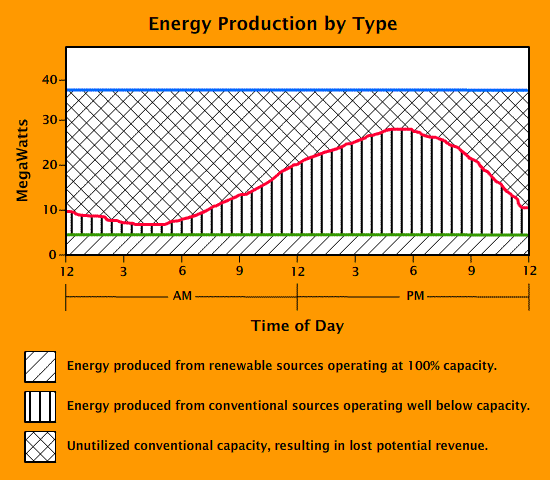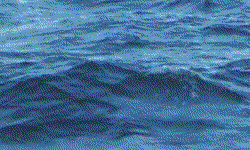
|
|
|
The governments of many countries are or have enacted legislation mandating the use of renewable energies within their utility systems. They feel the need to legislate it because switchover to renewable energies isn't happening - or it isn't happening quickly enough. Regardless, there currently isn't enough renewable capacity installed - or even planned - to meet the legislated requirements. Realizing that simply enacting laws won't necessarily cause the industry to meet the prescribed production levels, governments have included various incentives. One such incentive is the concept of preferential treatment. This means that renewable energies will be used before conventional (non-renewable) energies. In other words, whenever there is a demand for energy, the utilities will use the energy from renewable sources first (up to 100% of their capacities), and (if the demand is greater than the amount that the renewable sources can supply) then they will use energy from conventional sources to meet the demand. Similarly, whenever the combined energy output from renewable sources and conventioinal sources exceeds the demand for energy placed on the grid by consumers, the conventional energy generators are instructed to scale back their production to the point where the supply equals the demand. All the while, the renewable generators are allowed to continue producing at 100% of their capacity. This methodology creates an abnormally advantageous environment for investors.
Normally, investors must be concerned with whether a prospective company will be able to sell their products or services, and whether the company's production facilities will be able to meet demand. If the company can't meet demand, it will loose customers and possibly fail. Likewise, if the company can't effectivly market, or create a market for its products or services, it will probably fail. With renewable energy, however, neither of these concerns apply. No marketing is necessary, as the sale of all energy produced is guaranteed, and the utilities will continually accept renewable energy supplies (even if it is less than the demand) because the legislation requires it.
The following graph illustrates how electricity producers operate to meet demand during a typical 24 hour period. The red line represents the energy demand at any given time throughout the day. (The amount of energy produced is continuously kept equal to the demand.) The diagonally lined area (up to the green line) represents the amount of energy supplied by renewable energy producers operating at 100% of their capacities The vertically lined area (between the green and red lines) represents the amount of energy supplied by conventional sources. The criss-crossed area (between the red and blue lines) represents the unutilized capacity of conventional energy suppliers, showing that much of the conventional generating capacity must sit idle - while all (100%) of renewable generating capacity is utilized throughout the day. The large amount of conventional genertating capacity left idle illuminates the huge competitive advantage renewable energy producers have.

|




